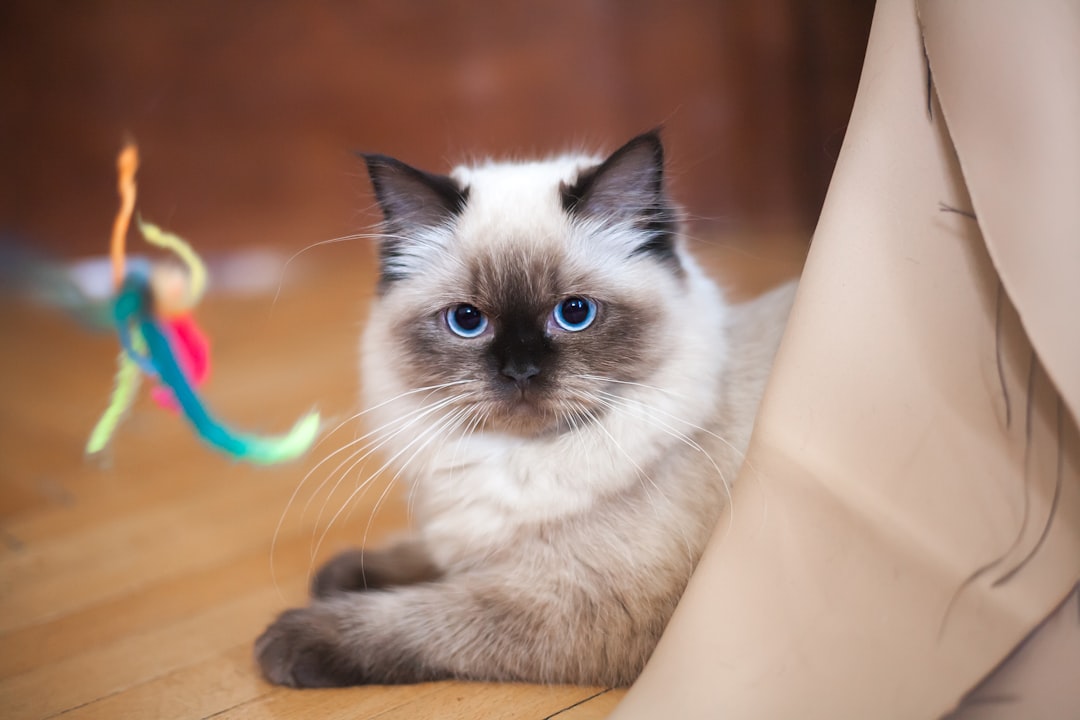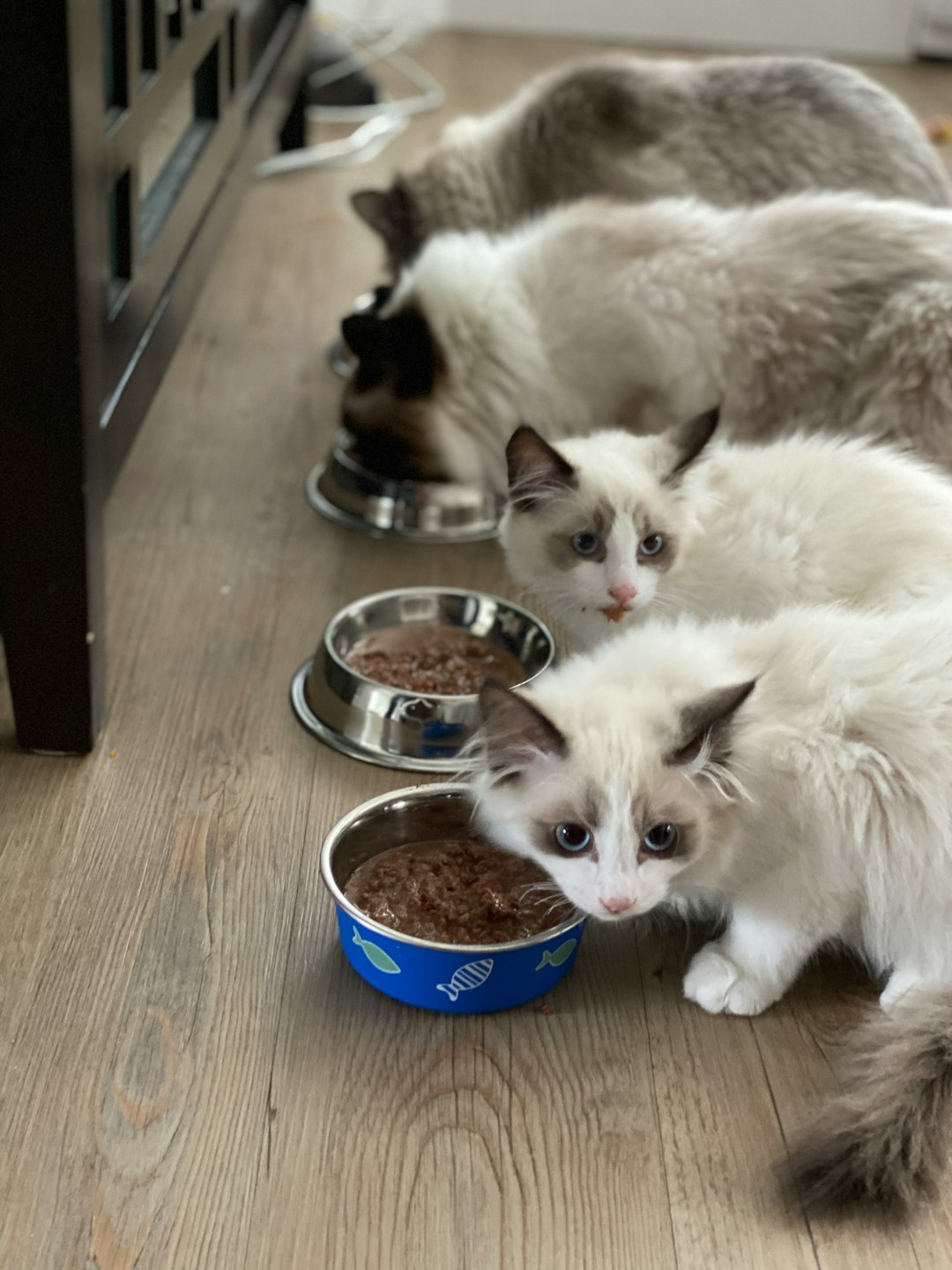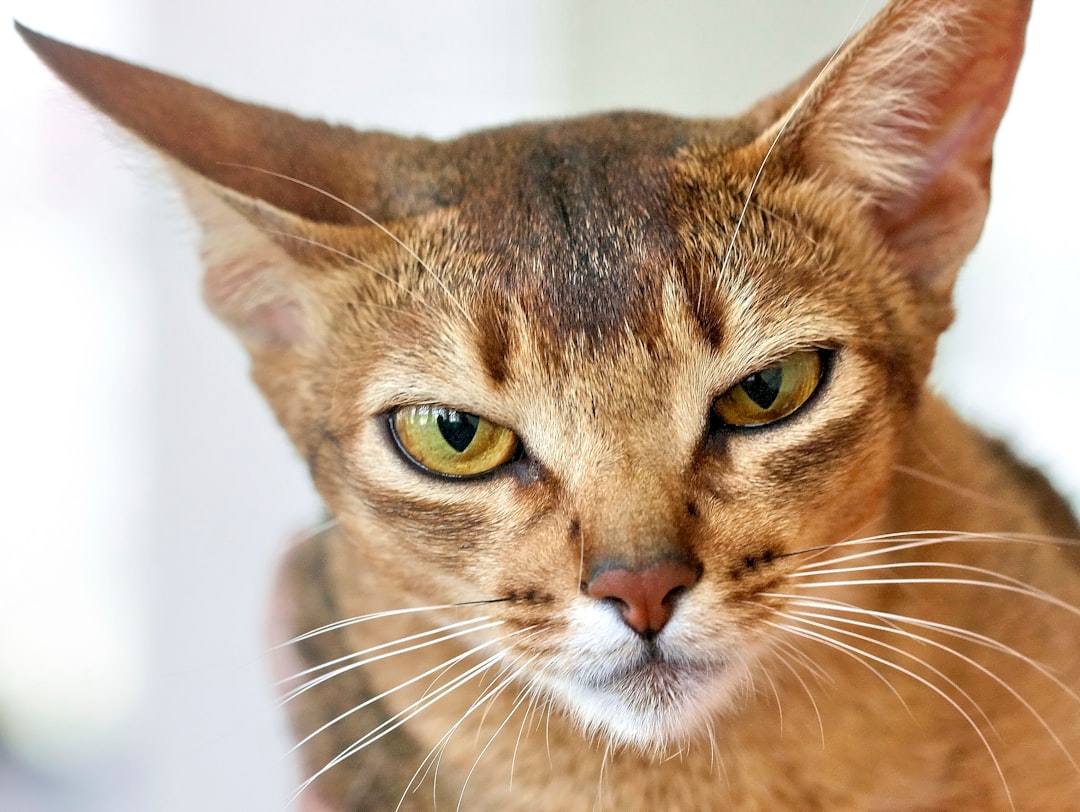As a devoted cat owner, you know that your feline friend relies on you for love, care, and good health. However, just like humans, cats are susceptible to various health issues that can impact their quality of life. Recognizing illnesses in cats early can be crucial for their well-being. In this comprehensive guide, we will explore some of the most common conditions affecting our furry companions, including Feline Lower Urinary Tract Disease, Chronic Kidney Disease, and Diabetes Mellitus. By understanding these ailments, you can be proactive in ensuring your pet receives the necessary care and attention they need to thrive. So, let’s dive into the world of cat health and equip ourselves with the knowledge to keep our beloved pets happier and healthier.
Understanding Common Cat Illnesses
Overview of Cat Health
Maintaining optimal health in cats is crucial for their overall well-being and quality of life. As a responsible cat owner, it’s essential to understand illnesses in cats that can impact your furry friend. Here are some common conditions to be aware of:
- Feline Lower Urinary Tract Disease (FLUTD): This encompasses a range of urinary issues, often leading to painful urination or blockages.
- Chronic Kidney Disease (CKD): A progressive illness that affects kidney function, CKD is common in senior cats.
- Feline Diabetes Mellitus: This metabolic disorder, characterized by elevated blood sugar levels, can lead to serious health complications.
- Dental Disease: Oral health plays a vital role in overall cat health, with dental disease being a prevalent issue.
- Hyperthyroidism: Often seen in older cats, this condition results from an overproduction of thyroid hormones.
- Obesity: An increasing problem, obesity can lead to numerous related health issues.
- Gastrointestinal Disorders: From vomiting to diarrhea, these disturbances can indicate more serious underlying conditions.
- Skin Conditions: Issues such as allergies or infections can significantly impact your cat’s comfort and health.
- Heart Disease: Various cardiac conditions can be encountered in felines and require immediate attention.
Importance of Early Detection
Recognizing signs of illness early can make a significant difference in your cat’s treatment options and prognosis. Some key reasons why early detection matters:
- Improved Treatment Outcomes: Many conditions are more manageable when diagnosed early, often reducing the severity and the cost of treatment.
- Quality of Life: Identifying illnesses in cats sooner can limit discomfort and help maintain a higher standard of living.
- Preventive Measures: Regular veterinary check-ups empower you to catch potential issues before they escalate into serious concerns.
As a cat owner, being vigilant about your pet’s health and understanding common illnesses is vital to ensuring their happiness and longevity. Make it a habit to monitor any changes in behavior, appetite, or physical appearance, and consult your veterinarian whenever anything seems off.
Feline Lower Urinary Tract Disease (FLUTD)
Feline Lower Urinary Tract Disease (FLUTD) is a common yet serious condition affecting many cats, particularly those who are overweight or stressed. Understanding FLUTD is crucial for cat owners, as it can lead to severe health complications if left untreated.
Symptoms of FLUTD
Recognizing the symptoms early can facilitate prompt veterinary intervention. Common indicators include:
- Frequent urination: Cats may try to urinate more often but produce little to no urine.
- Straining to urinate: A cat may exhibit visible discomfort while attempting to urinate.
- Blood in urine: Hematuria, or blood in urine, can indicate a urinary issue.
- Licking the genital area: Cats often groom themselves excessively if they experience pain.
- Crying during urination: Yowling or crying can signify acute discomfort or pain.
Promptly addressing these symptoms is vital to avoid complications such as urinary blockages.
Treatment Options and Prevention
Effective treatment options for FLUTD vary based on its underlying cause but may include:
- Medications: Antibiotics for bacterial infections, anti-inflammatories for pain relief, or antihistamines for allergies.
- Diet modification: Special prescription diets designed to dissolve urinary crystals or stones may be necessary.
- Increased water intake: Encouraging hydration can help flush the urinary tract.
Preventive measures are equally essential:
- Maintain a balanced diet to prevent obesity.
- Ensure your cat stays hydrated, possibly through wet food or water fountains.
- Reduce stress in your cat’s environment by introducing playtime, climbing structures, and safe spaces.
By recognizing the signs and seeking timely intervention, cat owners can greatly improve their feline’s health and quality of life, significantly reducing the risks associated with illnesses in cats like FLUTD.
Chronic Kidney Disease (CKD)
Chronic Kidney Disease (CKD) is a prevalent condition in older cats, severely affecting their quality of life. Understanding CKD in felines is crucial for every cat owner, as early detection can significantly improve treatment outcomes.
Recognizing the Signs
Identifying Chronic Kidney Disease (CKD) early can make a difference in managing your cat’s health. Common signs include:
- Increased Thirst and Urination: If your cat seems to drink or urinate more than usual, it may indicate kidney issues.
- Weight Loss: A noticeable drop in weight could be a warning signal of CKD.
- Reduced Appetite: Cats may lose interest in food due to nausea or discomfort related to kidney dysfunction.
- Vomiting: Occasional vomiting or diarrhea can result from waste buildup in the bloodstream.
- Lethargy: A general decrease in activity levels and playfulness can be a symptom of underlying health problems.
Monitoring for these symptoms will help you seek veterinary care promptly.
Managing CKD in Senior Cats
A proactive approach can greatly enhance your cat’s well-being despite a CKD diagnosis. Here are some management strategies:
- Dietary Changes: Provide a low-protein, low-phosphorus diet specifically formulated for kidney health.
- Hydration: Encourage fluid intake through fresh water or wet food options.
- Regular Vet Visits: Schedule routine check-ups to monitor kidney function and adjust treatment as needed.
- Medication: Your veterinarian may prescribe medications to help manage symptoms and slow down progression.
Remember, awareness of illnesses in cats, like CKD, allows for better care and enhances your feline friend’s quality of life.
Feline Diabetes Mellitus
Feline Diabetes Mellitus is a serious metabolic disorder that affects a cat’s ability to produce or respond adequately to insulin, leading to elevated blood sugar levels. This condition is becoming increasingly common, making it crucial for cat owners to recognize its symptoms and take swift action.
Causes and Risk Factors
The exact cause of diabetes in cats remains unclear, but several factors can contribute to its development:
- Genetic predisposition: Certain breeds, such as Burmese cats, exhibit a higher risk.
- Obesity: Excess weight can lead to insulin resistance, significantly increasing the likelihood of diabetes.
- Age: Older cats are more susceptible due to the natural decline in metabolic function.
- Hormonal disorders: Conditions like Cushing’s disease or hyperthyroidism can trigger diabetes.
- Diet: A high-carb diet can contribute to obesity, further elevating the risk of diabetes.
Recognizing these risk factors is vital for prevention and early intervention.
How to Manage Diabetes
Managing feline diabetes requires a comprehensive approach:
- Healthy diet: Transition your cat to a high-protein, low-carbohydrate diet, as this helps regulate blood sugar levels.
- Insulin therapy: Daily insulin injections may be needed to control blood glucose levels.
- Regular monitoring: Frequent blood glucose tests will enable you to track your cat’s condition and adjust treatment accordingly.
- Weight management: Keeping your cat at a healthy weight is crucial for minimizing complications related to diabetes.
- Veterinary check-ups: Regular visits will ensure that your cat’s diabetes is well-managed and any issues are promptly addressed.
By understanding and managing illnesses in cats like diabetes, you can significantly improve your feline friend’s quality of life.
Dental Disease in Cats
Identifying Dental Problems
Dental disease in cats is often overlooked, yet it can significantly impact their overall health. Common signs to watch for include:
- Bad breath (halitosis)
- Swollen or bleeding gums
- Difficulty eating or chewing
- Excessive drooling
- Pawing at the mouth
Early detection of these symptoms can prevent more severe health complications. Regular observations will ensure you notice any changes in your cat’s behavior or eating habits that may indicate underlying dental issues.
Importance of Dental Care
Prioritizing dental health is essential for your cat’s well-being. Here are some compelling reasons to maintain a proper dental care routine:
- Prevention of Dental Disease: Regular brushing and professional cleanings can help prevent plaque buildup and periodontal disease.
- Overall Health: Poor dental hygiene can lead to systemic issues, as bacteria from dental problems may enter the bloodstream, affecting vital organs such as the heart and kidneys.
- Improved Quality of Life: Healthy teeth and gums contribute to your cat’s ability to eat comfortably and maintain a healthy weight.
Implementing a consistent dental care routine—such as regular veterinary dental check-ups, at-home brushing, and dental treats—will help safeguard your feline friend against illnesses in cats related to dental problems.
Hyperthyroidism in Cats
Hyperthyroidism is a common hormonal disorder in older cats, characterized by an overproduction of thyroid hormone. This condition can significantly affect a cat’s metabolism, leading to various health complications if left untreated.
Symptoms to Watch For
Recognizing the symptoms of hyperthyroidism early can greatly improve your cat’s quality of life. Some key signs include:
- Increased appetite: Despite eating more, your cat may still lose weight.
- Weight loss: A noticeable decrease in body weight can occur even with increased food intake.
- Increased activity: Cats may display hyperactivity or restlessness.
- Vomiting: Regular episodes of vomiting may be present.
- Diarrhea: Some cats experience digestive issues that lead to diarrhea.
- Changes in coat: The fur might appear unkempt or greasy.
- Increased thirst and urination: Frequent drinking and urination can be signs of underlying issues.
Diagnosis and Treatment
If you suspect your cat may have hyperthyroidism, prompt veterinary attention is crucial. Diagnosis typically involves:
- Blood tests: These tests measure thyroid hormone levels to confirm hyperthyroidism.
- Physical examinations: A vet may detect an enlarged thyroid gland during a routine check-up.
Once diagnosed, treatment options include:
- Medications: Antithyroid drugs can help manage hormone levels.
- Radioactive iodine therapy: A highly effective, permanent solution that destroys overactive thyroid tissue.
- Dietary management: Specialized diets with restricted iodine can control hormone production.
- Surgery: In some cases, surgical removal of the thyroid gland may be recommended.
Being aware of illnesses in cats like hyperthyroidism allows cat owners to take timely action, ensuring their furry companions lead healthier lives.
Obesity and Its Related Issues
Consequences of Obesity
Obesity in cats is an escalating concern among pet owners and veterinarians alike. This condition can lead to a variety of illnesses in cats, negatively impacting their overall health. Consider the following consequences:
- Diabetes Mellitus: Obesity increases the likelihood of insulin resistance, paving the way for diabetes.
- Joint Issues: Extra weight places additional stress on your cat’s joints, leading to arthritis or mobility problems.
- Heart Disease: Overweight cats are at a higher risk for cardiovascular problems, which can significantly reduce their life expectancy.
- Liver Disease: Excess fat can lead to hepatic lipidosis, a severe condition that affects liver function.
- Reduced Lifespan: Cats that are overweight often have a shorter lifespan due to related health complications.
Strategies for Weight Management
Managing a cat’s weight is crucial to their long-term health and happiness. Here are actionable strategies you can implement:
- Portion Control: Measure your cat’s food carefully to avoid overfeeding.
- Balanced Diet: Opt for high-quality, low-calorie cat food rich in nutrients to keep your cat satisfied.
- Regular Exercise: Encourage playtime with interactive toys or engage in activities that stimulate your cat’s instincts.
- Routine Vet Visits: Regular check-ups will help monitor your cat’s weight and health conditions.
- Hydration: Ensure your cat has constant access to fresh water, as hydration plays a role in weight loss.
By recognizing the signs of obesity and adopting effective weight management strategies, cat owners can significantly contribute to their pets’ health and well-being, minimizing the risk of serious illnesses in cats.
Gastrointestinal Disorders
Common Digestive Issues
Gastrointestinal disorders in cats can manifest in various ways, affecting their overall health and well-being. It’s vital for cat owners to be aware of some common digestive issues, including:
- Vomiting: Frequent vomiting can indicate problems such as hairballs, food allergies, or more severe conditions like pancreatitis.
- Diarrhea: This can be caused by dietary changes, infections, or intestinal parasites.
- Constipation: Difficulty in passing stool often leads to discomfort and potential health risks, like intestinal blockages.
- Loss of Appetite: An uncharacteristic disinterest in food can signal underlying health issues.
- Flatulence: Excessive gas can indicate food intolerance or gastrointestinal imbalance.
When to See a Vet
Recognizing the signs of illnesses in cats is crucial. If your feline companion exhibits any of the following symptoms, consult a veterinarian promptly:
- Persistent vomiting or diarrhea lasting more than a day.
- Severe lethargy or weakness.
- Noticeable weight loss or drastic changes in appetite.
- Blood in vomit or stool.
- Signs of pain during bowel movements.
Timely intervention can prevent complications and ensure your cat receives appropriate treatment. Always prioritize their health to help maintain a happy and thriving life!
Skin Conditions in Cats
Skin conditions in cats can present a variety of challenges for both the feline and their owner. Recognizing the symptoms early and understanding the common types can lead to effective treatment and improved quality of life.
Types of Skin Conditions
Cats can experience several types of skin issues, including:
- Allergic Reactions: Often triggered by food, pollen, or flea bites, these reactions can cause itching and inflammation.
- Dermatitis: This condition can arise from various irritants, leading to redness, swelling, and discomfort.
- Fungal Infections: Ringworm is a notable example, and it can cause circular patches of hair loss.
- Parasites: External parasites like fleas, mites, and ticks can result in severe scratching and skin irritation.
- Hot Spots: These are localized areas of infection and inflammation that can develop rapidly and require immediate attention.
Home Remedies and Treatments
Addressing skin conditions in cats can involve a mix of home remedies and veterinary intervention:
- Regular Grooming: Keeping your cat clean and free of mats reduces irritation and allows for early detection of any skin issues.
- Oatmeal Baths: These can soothe itchy skin and provide relief from irritation.
- Dietary Changes: Switching to a hypoallergenic diet may help in cases of food allergies.
- Medications: Your vet might prescribe corticosteroids, antihistamines, or topical treatments depending on the diagnosis.
- Preventive Care: Using flea and tick preventatives can significantly minimize the risk of skin issues stemming from parasites.
Proper observation and timely intervention play crucial roles in managing skin conditions in cats effectively. Always consult your veterinarian if you notice any persistent symptoms or changes in your cat’s skin condition.
Heart Disease in Felines
Understanding Heart Disease
Heart disease in felines can significantly impact your cat’s health and quality of life. It may arise due to various factors including age, genetics, and diet. The most common types of heart disease in cats include:
- Hypertrophic Cardiomyopathy (HCM): This inherited condition causes the heart muscle to thicken, which can eventually lead to heart failure.
- Dilated Cardiomyopathy (DCM): Less common in cats but still a concern, DCM results in an enlarged, weakened heart.
- Congenital heart defects: These are structural problems present at birth that can affect heart function.
Cats often show few symptoms until the illness has progressed. Symptoms to watch for include:
- Lethargy: Decreased activity or reluctance to play.
- Breathing difficulties: Rapid breathing or panting.
- Coughing: Any sign of coughing should prompt a vet visit.
Preventive Measures and Treatment
Preventing heart disease in cats is essential. Here are some steps to take:
- Regular Veterinary Check-ups: Annual visits can help catch conditions early.
- Healthy Diet: Ensure your cat is on a balanced diet low in sodium.
- Maintain a Healthy Weight: Obesity increases the risk of heart disease.
If heart disease is diagnosed, treatment may include:
- Medications: Prescription drugs can help manage symptoms and improve heart function.
- Dietary Changes: Specialized diets may be recommended.
- Surgical Options: In severe cases, surgery may be necessary to correct structural problems.
Taking these steps can help manage heart disease effectively and promote a healthier, happier life for your feline friend. Always consult your veterinarian for personalized advice tailored to your cat’s specific needs.
Frequently Asked Questions
What are the most common illnesses in cats that owners should be aware of?
Some of the most common illnesses in cats include upper respiratory infections, dental disease, kidney disease, diabetes mellitus, and hyperthyroidism. Upper respiratory infections can cause symptoms like sneezing and coughing, while dental disease can lead to tooth loss and pain. Kidney disease is prevalent in older cats, affecting their ability to filter toxins, and diabetes and hyperthyroidism are hormonal conditions requiring ongoing management.
How can I tell if my cat is sick?
Knowing the signs of illness in your cat is crucial for early detection. Symptoms may include changes in appetite, lethargy, unusual behavior, vomiting, diarrhea, or altered grooming habits. If your cat exhibits any of these symptoms, it’s important to consult a veterinarian for a thorough examination. Cats tend to hide their discomfort, so subtle changes in their behavior can be significant indicators of health problems.
What preventative measures can I take to ensure my cat stays healthy?
Preventative care for cats includes regular veterinary check-ups, keeping up with vaccinations, providing a balanced diet, and ensuring your cat is spayed or neutered. Additionally, maintaining proper dental hygiene through tooth brushing or dental treats can prevent health issues. Regular exercise and mental stimulation through playtime and interactive toys can also contribute significantly to your cat’s overall well-being.
At what age should my cat start having regular veterinary check-ups?
Cats should start having regular veterinary check-ups at least once a year from the age of one, with more frequent visits recommended for senior cats or those with health issues. Annual examinations allow for early detection of any potential health problems and help schedule necessary vaccinations and preventive care. As your cat ages, biannual check-ups may be advisable to closely monitor their health status and address any emerging concerns.
What should I do if I suspect my cat has an illness?
If you suspect that your cat may be ill, it’s vital to contact your veterinarian as soon as possible. Describe the symptoms you’ve observed, and follow any preliminary advice they provide. Avoid self-diagnosis or treatment, as this can worsen the condition or lead to complications. Timely intervention can make a significant difference in your cat’s health outcomes, so don’t hesitate to seek professional help.



